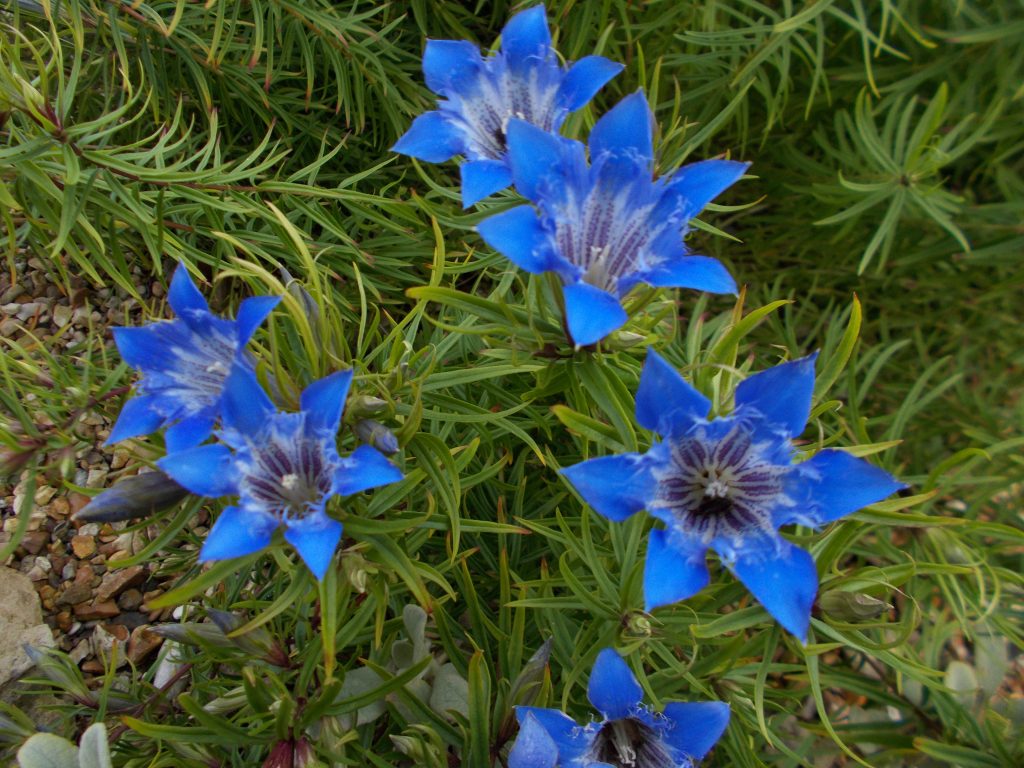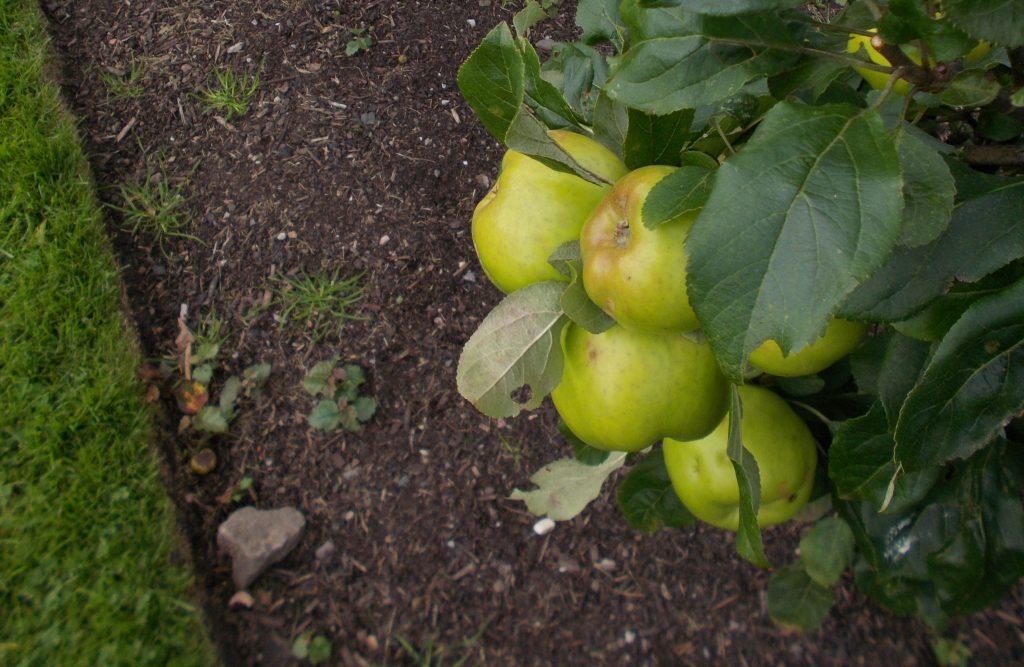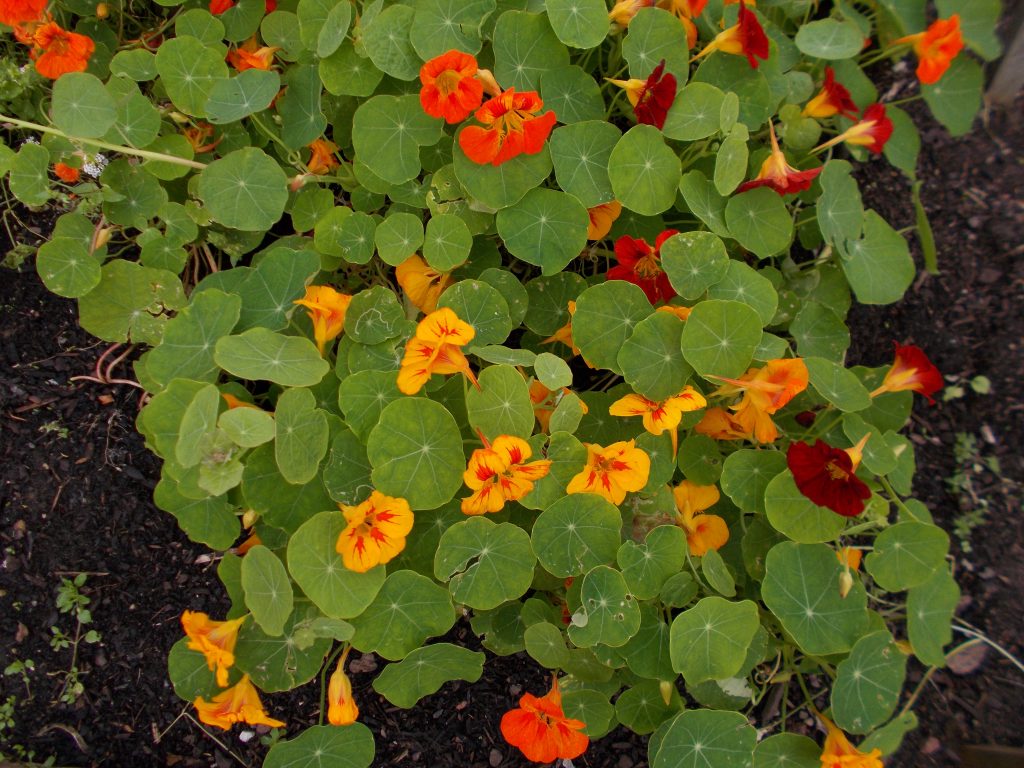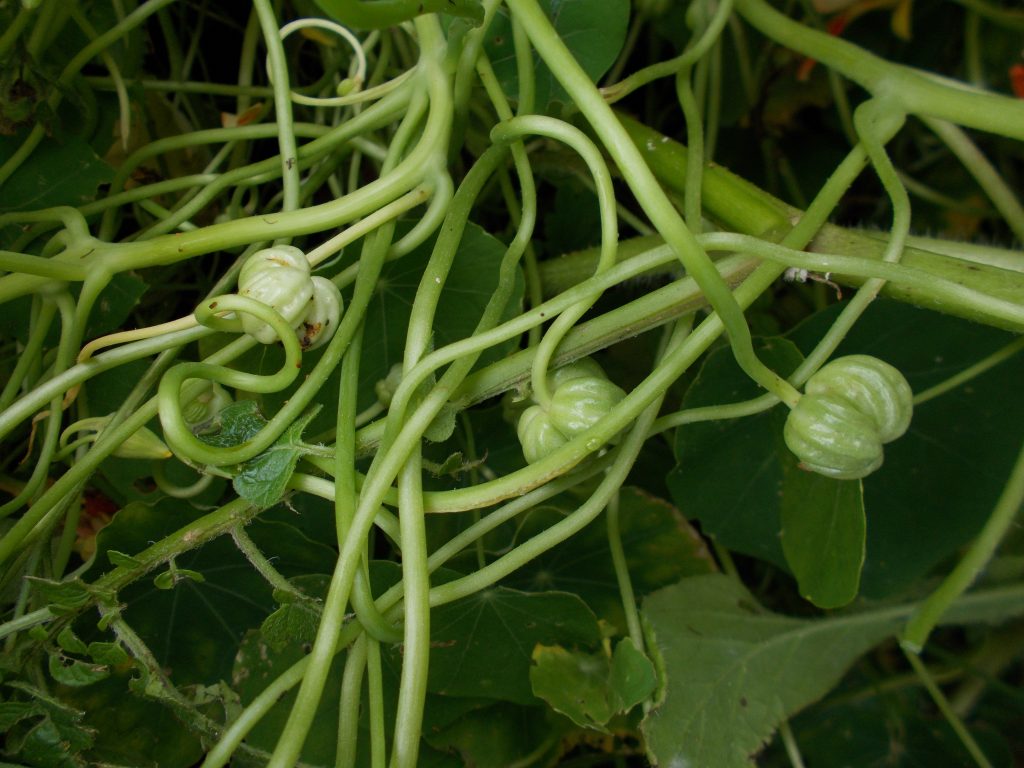The Gentians are flowering, the first apples have fallen and beneath the mass of foliage Nasturtium seed pods are to be found. All coinciding with the end of the Edinburgh Festival. Gentiana paradoxa and G. septemfida ‘Latifolia’, both from the Caucasus are flowering in the alpine area. Other species can be found in the peat walls and rock garden. Continuing to flower prolifically are Nasturtium cultivars. These hardy annuals make extensive vegetative growth and once the flowers finish the extended petiole curls and retracts with the seed pod into this canopy. Pull the foliage apart to collect these for next seasons sowing and appreciate the peppery aroma released from the leaves. The third signifier that the season is changing are fallen apples. The fruit of Malus domestica ‘East Lothian Pippin’ are well formed on the cordon trained trees in the demonstration garden. A crisp eating apple, the first fallers have appeared on the ground beneath the tree. To ensure successful storage use these fallers now and by treating the fruit you pick with care, stored cool and dark these will provide a supply of apples into the autumn. Remember to check over the crop regularly and remove any that are blemished and showing signs of rot. The way to determine if apples are ripe and ready to harvest is by cupping your hand beneath the fruit and with a gentle upward twisting motion see if the apple separates with the stalk from the tree. If not, leave for more sunshine to work its magic.

Gentiana paradoxa



